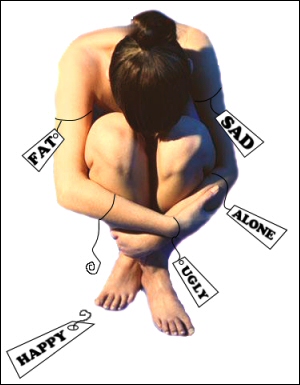
Drowning in the dark blood of would-be brothers who, |  |
 |
This may be the aspect of self-harm that is most puzzling to those who do not do it. Why would anyone choose to inflict physical damage on him or herself? Because they cannot imagine themselves doing such a thing under any circumstances, many people dismiss self-injury as "senseless" or "irrational" behavior. And certainly it does seem that way at first glance. But people generally do things for reasons that make sense to them. The reasons may not be apparent or may not fit into our frame of reference, but they exist and recognizing their existence is crucial to understanding self-harm. With understanding of the reasons behind a particular act of self-harm comes knowledge of the coping skills that are lacking. When you know what skills are missing, you can start trying to introduce them. This page is in two sections. The first has to do with what people who engage in SIB say it does for them. The second deals with possible biological or psychoneurological reasons -- why some people find relief in self-harm while others don't. The message of both is simple: It's about coping. |
|      |
        |
In an interesting theory that combines all three categories, Miller (1994) posits an explanation for why such a large majority of peep who self-harm are female. Women are not socialized to express violence externally and when confronted with the vast rage many self-injurers feel, women tend to vent on themselves. She quotes the feminist poet Adrienne Rich:
"Most women have not even been able to touch Miller says, "Men act out. Women act out by acting in." Another reason fewer men self-injure may be that men are socialized in a way that makes repressing feelings the norm. Linehan's (1993a) theory that self-harm results in part from chronic invalidation, from always being told that your feelings are bad or wrong or inappropriate, could explain the gender disparity in self-injury; men are generally brought up to hold emotion in. AlexithymiaAlexithymia is a fairly recent psychological construct describing the state of not being able to describe the emotions one is feeling. Alexithymia was positively linked to self-injurious behavior in a 1996 study (Zlotnick, et el.) and is congruent with how people who self-injure often describe the emotional state before an injury; they frequently cannot pinpoint any particular feeling that was present. This is especially important in understanding the communicative function of self-injury: "Rather than use words to express feelings, an alexithymic's communication is an act aimed at making others feel [those same feelings]" (Zlotnick et al., 1996). Self-capacities and InvalidationA constructivist theory of self-injurious behavior (Deiter, Nicholls, & Pearlman, 2000) holds that people who self-injure usually have not developed three important self-capacities: the ability to tolerate strong affect, the ability to maintain a sense of self-worth, and the ability to maintain a sense of connection to others. The first of these speaks directly to the affect-regulation role of self-harm; the others are perhaps related to its communicative functions. Pearlman et al. (2000) note that "when children experience shaming and punitive rhetoric or physical blows rather than responsive words" they cannot internalize others are loving and cannot develop the capacity to maintain a sense of connection to others. They further state, "The ability to experience, tolerate, and integrate strong affect cannot develop fully when strong feelings are met with punishment or derision." Having a sense that some feelings are unacceptable and not allowed also impairs this ability. And the ability to maintain a sense of oneself as a person of worth cannot be developed when a child never feels she is good enough, when her "existence and accomplishments are met with silence or abusive words or actions." Interestingly, all of these conditions are found in invalidating environments, which Linehan and others have tied to future self-injury. Finally, Haines and Williams (1997) found that self-mutilators reported more use of problem avoidance as a coping strategy and perceived themselves to have less control over problem-solving options. This feeling of disempowerment may in turn be related to the chronic invalidation many self-injurers have experienced. |
